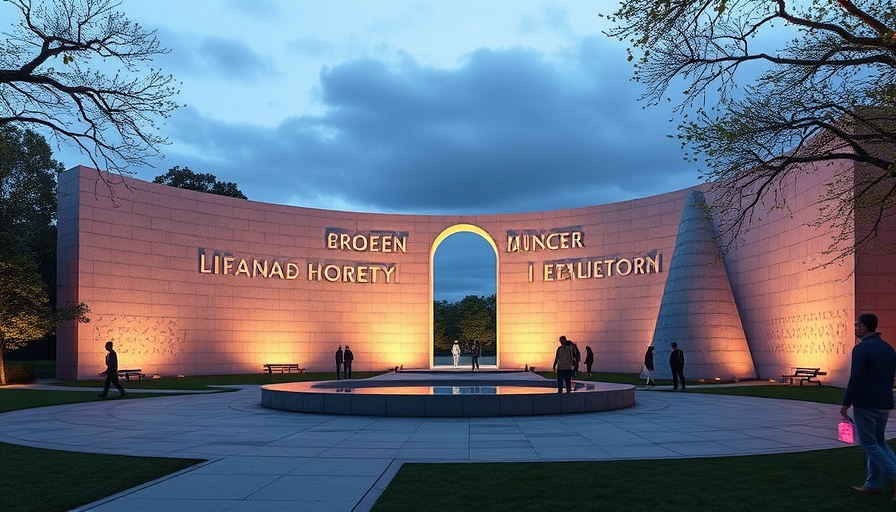
Proposed Memorials: A Mixed Response from Architectural Community
The recent unveiling of memorial proposals for Queen Elizabeth II by prominent firms such as Foster + Partners, Heatherwick Studio, and WilkinsonEyre has sparked a vigorous debate within the architectural community. The designs, presented as tributes to the late monarch near Buckingham Palace, have drawn notably critical reactions from Dezeen Debate readers. Descriptions of the designs as "mediocre" reflect a broader discontent with the initial concepts, leading many to ponder whether these esteemed architects have fallen short of expectations.
Design Excellence vs. Mediocrity in Memorials
Reader feedback has highlighted a clear divide in opinion. Some readers see potential in Heatherwick's approach, while others lament the overall quality of the submissions, with one commenter stating, "what a mediocre bunch of designs from the so-called great and good of architecture." The discontent raises questions about the criteria used for assessing such significant architectural endeavors. Memorials, by their nature, should encapsulate the essence of those they honor, and critics argue that the current proposals do not resonate emotionally or culturally.
The Importance of Meaningful Memorials
Memorials serve as reflections of society's values and collective memories. They are not just structures; they symbolize emotions, history, and connections to significant events and individuals. When a proposal is met with skepticism, as is the case here, it calls for a deeper examination of what is necessary to create a successful tribute. This conversation urges architects to consider not only aesthetics but also the cultural and emotional implications of their designs. With every memorial, there’s an opportunity to craft a narrative that resonates more profoundly with the public.
Learning from Comparisons: Past Memorials that Inspire
To navigate the criticism surrounding the current proposals, we can explore historical memorials that have successfully encapsulated their subjects. The Vietnam Veterans Memorial in Washington, D.C., stands as a poignant example; designed by Maya Lin, its simplicity allows for personal reflection and remembrance. Similarly, the 9/11 Memorial in New York City powerfully acknowledges loss through its design, fostering a space for healing and thought. These successful cases remind architects to focus on creating connection and depth within their designs.
Future of Public Memorials: A Call for Inclusive Design Practices
The critical reception of the memorial proposals for Queen Elizabeth II also opens discussions about inclusivity in the design process. Engaging diverse voices from the community during planning stages can yield insights that resonate more broadly with the public. Incorporating local traditions and histories into memorial design can serve to strengthen a sense of place and identity. The memorials that stand the test of time are often those that engage with the stories of the people they seek to honor.
The Emotional Component of Remembrance
As digital nomads looking to create productive workspace environments can attest, emotional resonance plays a significant role in design. A workspace that feels comfortable and connected often leads to increased productivity and satisfaction. Similarly, a successful memorial can conjure a sense of belonging and connection to history. The challenge for architects is to find that balance—to create not just visually appealing designs, but ones that speak to communal emotions and experiences.
As we critically assess the proposals presented, let’s remember that memorials are more than just architecture; they are stories, memories, and connections. They should invite everyone to reflect and remember, ensuring that their impact endures beyond their physical structure.
 Add Row
Add Row  Add
Add 




Write A Comment